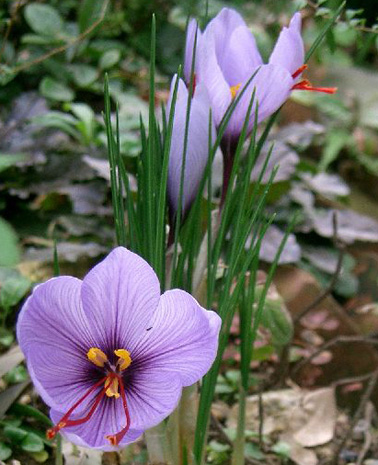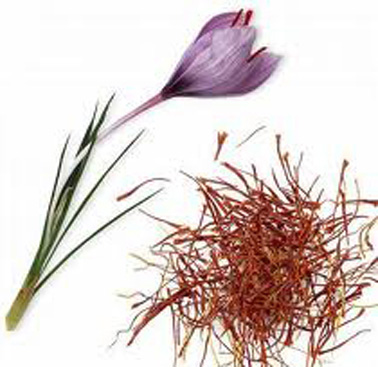|
Botanical Name:
Crocus sativus
Keshar consists of dried style and stigma from the flowers
of Crocus sativus Linn, Family Iridaceae
Common Name(s) in English & Indian Languages
Sanskrit: Kesara, Ghusina, Kasmira, Rakta
Assamese: Kumkum
Bengali: Jafran
English: Saffron
Guajarati: Keshar, Kesar
Hindi: Keshar, Keshara
Kannada: Kunkuma, Kesari
Malayalam: Kunkuma Puvu
Marathi: Keshar
Punjabi: Kesar, Keshar
Tamil: Kungumapuvu
Telugu: Kunkuma Puvvu
Urdu: Zafran
Botanical description:
A perennial, low growing (8–30 cm high), bulbous herb with
an underground globular corm, producing six to nine sessile
leaves, surrounded in its lower part by four or fi ve broad
membranous scales. Flowers borne on the terminal region of a
scape, each fl ower consisting of a pale reddishpurple
perianth showing a cylindrical tube about 10 cm long and six
oblong oval segments, an androecium of three stamens and a
gynoecium of three syncarpous carpels. Ovary inferior,
three-locular. Style slender, elongated and pale yellow in
the perianth tube, divided in its upper part into three
drooping, deep-red stigmas.
Parts used:
Dried Stigmas
Major chemical constituent:
Essential Oils, Bitter Glycoside, Picrocrocin and Crocin
Therapeutic uses:
• Emesis (Chardi)
• Cough (Kasa)
• Ulcer (Vrana)
• Pigmentation disorder (Vyanga)
• Disease of head (Siroroga)
• Diseases of vision (Drsti Roga)
• Diseases of throat (Kantha Roga)
• Pityriasis versicolor (Sidhma)
• Upward movement of gases (Udavartta)
• Urinary obstruction (Mutraghata)
• Sinusitis (Suryavartta)
• Migraine (Ardhava Bhedaka) |
|


|
|
|



